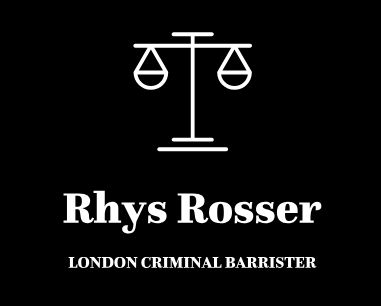Changes to the Drugs Sentencing Guidelines
Rhys discusses the changes in the Sentencing Guidelines for drug offences

On 27th January 2021, following various consultations, the Sentencing Council issued new sentencing guidelines in respect of drug offences. These will apply to both the Misuse of Drugs Act and the Psychoactive Substances Act. The guidelines will take effect from 1st April 2021, but Judges are likely to take note of some of the changes in the intervening period, especially those relating to categorisation of role.
Whilst the starting points and ranges are unchanged, there are three key changes that arise in the new guidelines.
Financial Advantage in relation to Role
There has always been a lacuna in the approach taken during sentencing exercises, as to how an offender’s benefit should be treated. It has been unclear whether a ‘runner’ who earns very little, and may be funding their own habit, should be treated as having a lesser or significant role.
The Sentencing Council have now provided clear guidance on this issue. If an individual only receives a ‘limited’ financial advantage, then they are to be treated as lesser role, the guidelines specifically state that this includes where an offender is funding their own habit. Previously, these cases would have been treated as being between lesser and significant.
In order for someone to be treated as having a significant role, there must be evidence of ‘significant’ financial or other advantage.
The impact of this will be that runners and individuals who supply drugs to fund their own habit will receive lesser sentences.
Cannabis and Ecstasy Weights and Yields
There has been an increase in purity of ecstasy and expected yield of cannabis since the guidelines were introduced in 2012, the latter increasing from 40g to 55g.
The Sentencing Council have therefore amended the guidelines so that the guideline number of plants / weights in Categories 3 and 4 are reduced for cannabis. The number of tablets for each starting point when dealing with ecstasy has also been reduced. In Category One, for example, the starting point is now 7,000 tablets; whereas previously it was 10,000 tablets.
The Sentencing Council have also specifically stated that they will review the harm starting points every three years to ensure that they are properly updated.
Psychoactive Substances Classification
Through the introduction of the Psychoactive Substances Act 2016, various supply and possession offences were created. However, there have been no guidelines in place to assist when sentencing for these offences.
In respect of culpability, the factors to be considered are the same as those for drugs which are classified – with the same changes outlined above taking effect.
The starting point for harm does not deal with what the psychoactive substance actually is, instead focussing on the circumstances in which it is supplied. Category One is reserved for commercial operations or supply in a custodial setting; Category Two is street-dealing (the same approach as for Category three in Misuse of Drugs Act cases) and finally Category Three deals with ‘very small quantity’.
There is no distinction drawn between any named substance. The approach taken by the Sentencing Council to deal with this is an interesting one: rather than to take a ‘class’ based approach as with the Misuse of Drugs Act offences, the focus is on the effect the drug has. This is dealt with by the aggravating features, in that Judges should consider whether the end-user is exposed to greater harm than they are anticipating.
Summary
The clarity in respect of financial benefit is well overdue and many practitioners will be pleased to see that the definition provides that those offenders, previously between significant and lesser, will now firmly be treated as having a lesser role.
The changes in starting point are likely to have a fairly limited effect in reality but demonstrate an awareness that the guidelines need to have flexibility.
Finally, the new Psychoactive Substances guidelines are welcome, they provide much needed direction on starting points and how to categorise harm. However, they could have given more discretion to the Sentencing Judge in how to approach the specific type of psychoactive substance; it appears that whilst this was the intention it is not clearly formalised within the guideline.
Fill in the Below to Contact Rhys and to obtain legal advice










